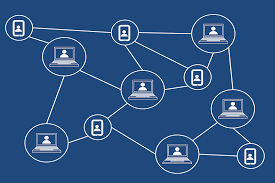Auditing and monitoring blockchain systems are critical for ensuring the integrity, security, and compliance of the network. Here are some key considerations for auditing and monitoring blockchain systems:
- Transaction Auditing: Audit the transactions recorded on the blockchain to verify their accuracy, integrity, and compliance with business rules and regulations. This involves reviewing transaction details, validating cryptographic signatures, and ensuring the proper execution of smart contracts. Auditing can help detect fraudulent or unauthorized transactions and ensure the consistency of data across the blockchain.
- Code Auditing: Conduct code audits of smart contracts and the underlying blockchain protocol. Smart contract audits involve reviewing the code for vulnerabilities, logic errors, and potential exploits. External security experts or firms can be engaged to perform independent code audits. Additionally, blockchain protocol audits assess the security and robustness of the consensus mechanism, network infrastructure, and cryptographic algorithms.
- Security Monitoring: Implement real-time security monitoring mechanisms to detect and respond to potential security threats or anomalies. This includes monitoring network traffic, node activities, and smart contract interactions. Security monitoring can help identify unauthorized access attempts, unusual transaction patterns, or abnormal behavior that may indicate a security breach or malicious activity.
- Node Monitoring: Monitor the health and performance of blockchain nodes to ensure their proper functioning and availability. Node monitoring involves tracking metrics such as block propagation time, block validation, network connectivity, and resource utilization. Node monitoring helps identify potential performance issues, network congestion, or node failures that may impact the overall blockchain network.
- Network Monitoring: Monitor the blockchain network for network-level attacks, such as distributed denial-of-service (DDoS) attacks or Sybil attacks. Network monitoring tools can detect unusual traffic patterns, monitor network latency, and identify potential malicious nodes or network disruptions. Timely detection of network-level attacks helps mitigate their impact and maintain network stability.
- Compliance Monitoring: Implement monitoring mechanisms to ensure compliance with relevant regulations, such as AML and KYC requirements. Monitor transactions for suspicious activities, such as large transactions, money laundering patterns, or flagged addresses. Compliance monitoring helps identify potential regulatory violations and supports the reporting and mitigation of compliance-related risks.
- Data Analytics: Leverage data analytics techniques to gain insights from blockchain data. Analyze transaction patterns, network behavior, and user activities to identify trends, anomalies, or potential risks. Data analytics can help detect fraud, assess network performance, and improve decision-making related to system upgrades or optimizations.
- Auditing Tools and Platforms: Utilize auditing tools and platforms specifically designed for blockchain systems. These tools provide automated auditing and monitoring capabilities, including transaction analysis, code scanning, security alerts, and compliance reporting. Such tools can streamline the auditing process and enhance the efficiency and effectiveness of monitoring efforts.
- Continuous Improvement: Regularly review and enhance the auditing and monitoring processes based on lessons learned, emerging threats, and regulatory changes. Stay updated with the latest security best practices, tools, and technologies to ensure that the auditing and monitoring mechanisms remain robust and effective over time.
By implementing comprehensive auditing and monitoring practices, blockchain systems can enhance security, detect potential vulnerabilities or anomalies, and ensure compliance with regulatory requirements. It is important to tailor these practices to the specific characteristics and requirements of the blockchain network and seek expertise from professionals familiar with blockchain technology and security auditing.
SHARE
